The new Mini GP, which will only be sold for one year, is already hard enough to pin down—should you be lucky enough to get your hands on one through a dealer right now. It’s harder to label, written up elsewhere as, in no shot order: insane, impractical, overpriced, and too hairball. Those critics are dead wrong.
Let’s take these statistically driven (and clearly not passion-driven) arguments on one at a time.
First, however, a little background: This is the third-generation Mini GP. Each version has been a works Mini for the road. It’s not a package. It’s not some scraps of “special” leather trim and some faux carbon-fiber sill plates and a CPU flash for five more horsepower. It’s a bespoke, numbers-limited car that, likely, you’ll own and the only other GP you’ll ever see will be at a Mini meet-up five states away.
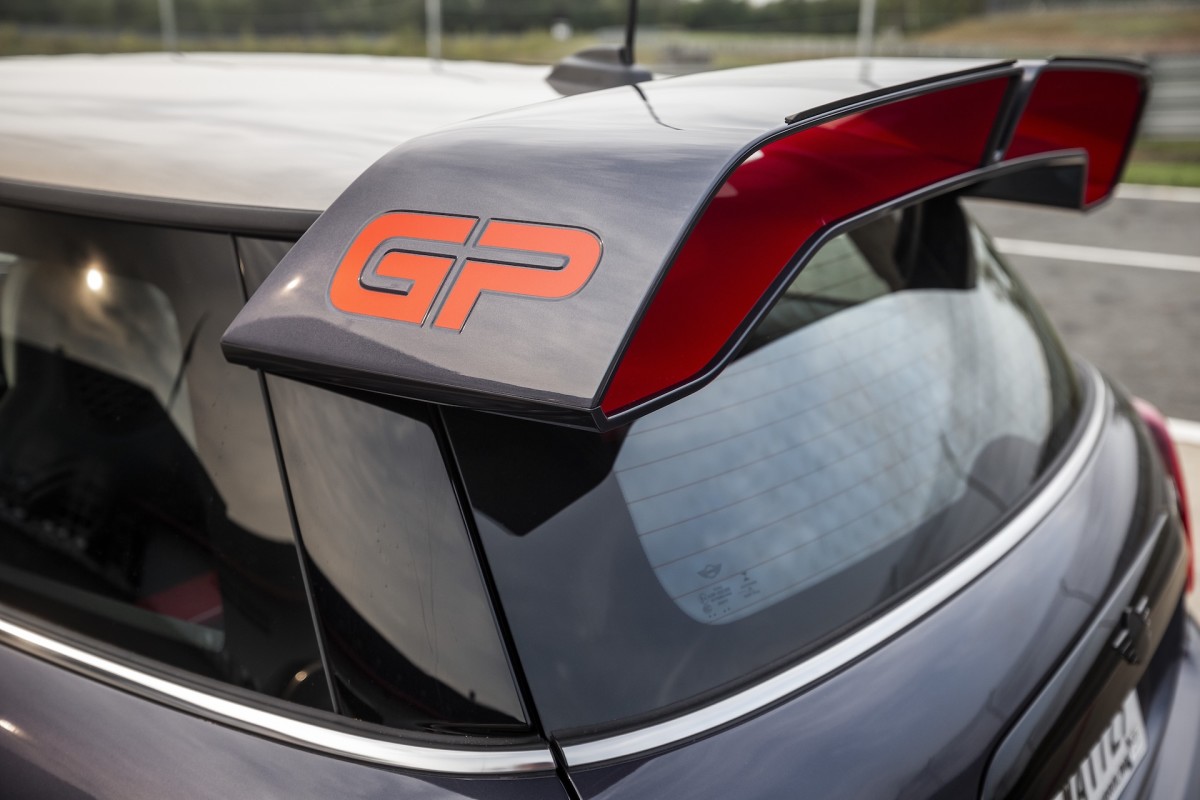
Prior generations, in both 2006 and 2013, were maxed at 2,000 cars worldwide. That’s expanded to 3,000 cars worldwide for the 2021 GP, but still, we’re talking about only a fistful for North America. This third-generation GP is the most powerful, and not by just a little bit. The 2013 car produced 211 hp. The 2021 gets essentially the same engine that’s in BMW’s M235i Gran Coupe, delivering 301 hp and at times nearly untamable 331 lb-ft of torque.
As for what’s wrong with it, and why that doesn’t matter, here’s our take.
Argument No. 1: The Mini GP is Too Dang Expensive
It certainly is. Base price is $45,570. A nearly-as-fast Honda Civic Type R is way cheaper, at $37,950. That car has front-wheel drive, like the Mini GP, and both are limited as a result. The Honda’s 306 hp, and 0-60 times (about 5 seconds flat) as well as other performance aspects are similar, too (more on that in the next section).
Arguably the “best” hot hatch of the segment is the $41,290 VW Golf R, simply because all-wheel-drive makes it a lot easier to drive, and, as a result, it shoots to 60 mph a half-second quicker, since it can put all its power down more readily (although it comes with a bit less grunt at 288 hp). The same thing happens darting out of corners—where you want the muscle on the road, not ripping through the front-wheel-driven tires of both the Mini and, to a lesser extent thanks to really good engineering, of the Honda.
Another key distinction is that both the Honda and the VW get adaptive suspensions, allowing them to feel softer around town, and only rock-rigid when you want that, for the track. Also, the Honda comes with a row-your-own manual six-speed gearbox. You can have either a DSG twin-clutch automatic in the VW, or a manual. The Mini only comes with an eight-speed automatic.
So the Mini costs more and has less tech. Why doesn’t that matter? Keep reading.
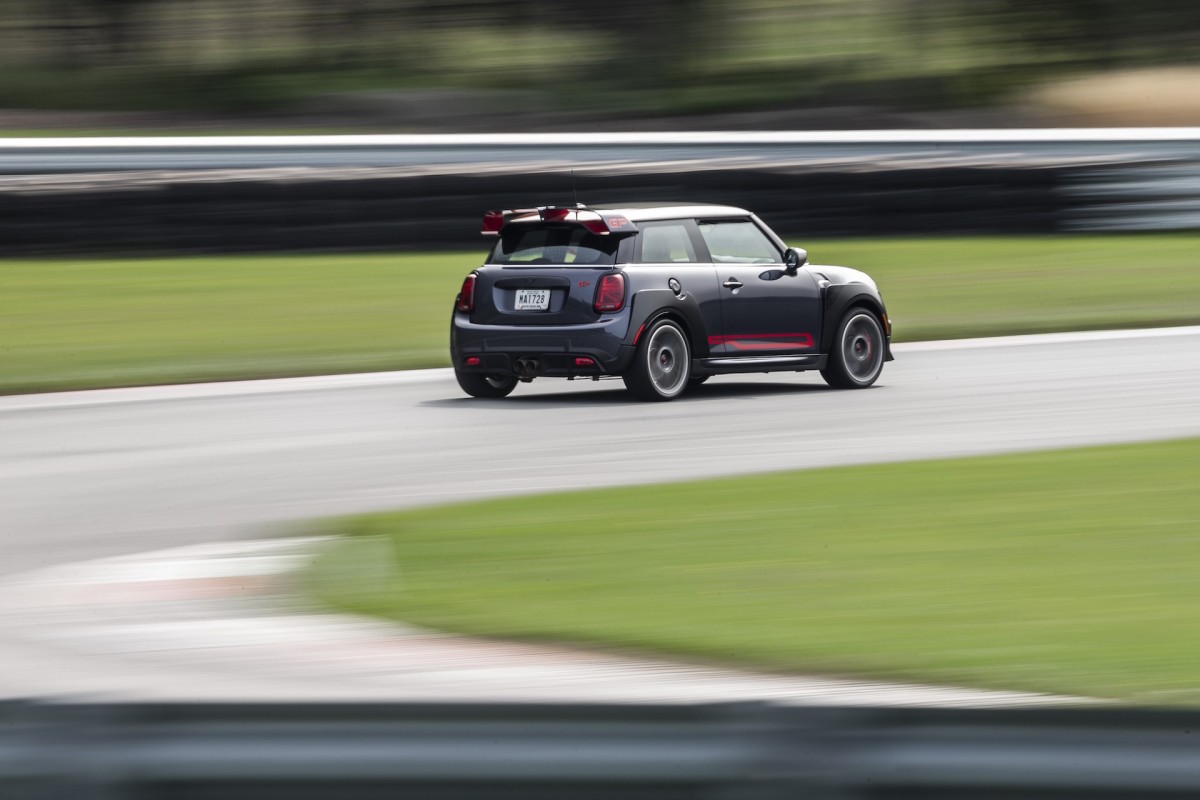
Argument No. 2: The Mini GP is Too Hairball.
Here’s the facts: This Mini drives angry. It brawls like an Englishman who’s had six pints and has just seen his team lose at football (the other football, that is).
We got to test the Mini GP at New York’s Monticello Motor Club, a private, members-only track in the Catskills. It’s an undulating, serpentine, 20-corner beast where you’re bound to be wrong more than once with every lap, and where a front-wheel-drive torque monster like the Mini GP can get a little terrifying. Sure, the GP’s track was widened versus the stock Hardtop. It sits on unique springs and dampers, and gets large anti-roll bars, plus Mini binned the rear seats entirely, putting a cross-chassis bridge that spans the interior of the cabin right about where your chest would be if those seats still existed. Mini bolted up chassis bracing everywhere else the engineers could manage, too.
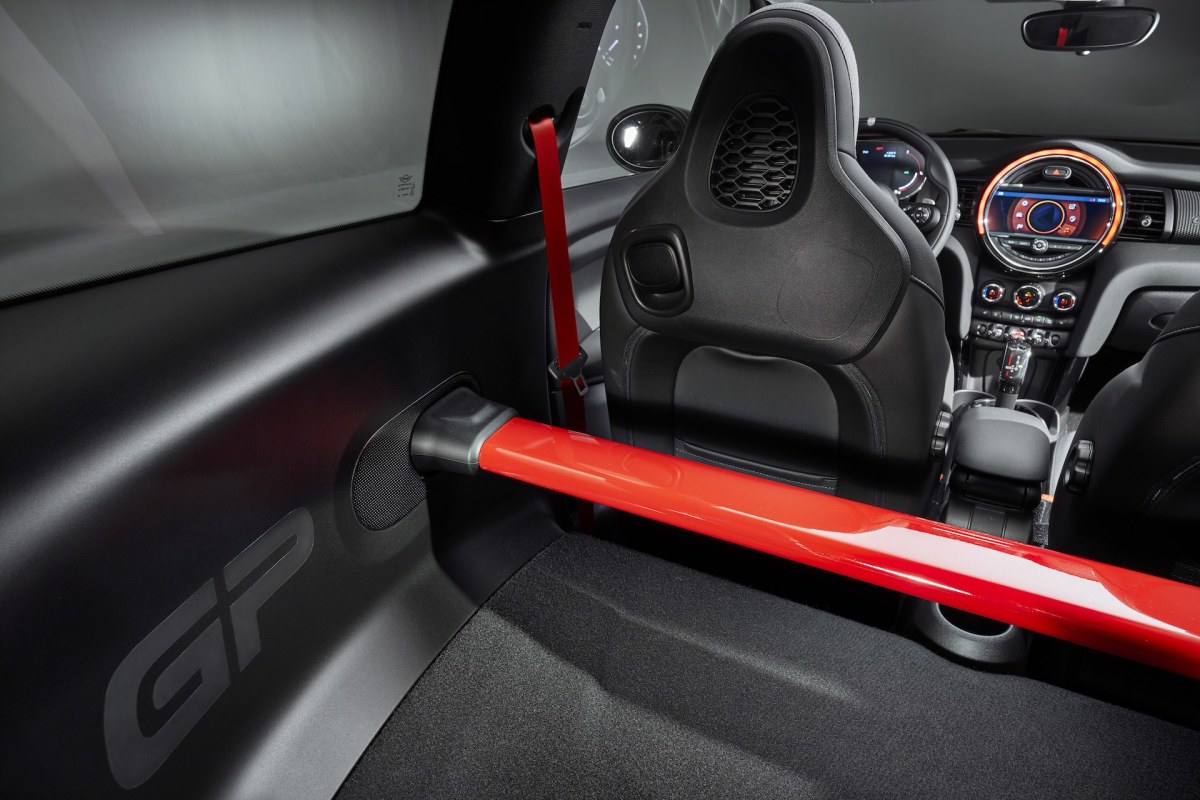
Worth note: The 18-inch wheels mounted to GP-specific, 235/35 Hankook tires—and the hey-there, cartoonish, carbon-fiber reinforced plastic fenders with integrated numbering (indicating which car in the series you own). These are functional, designed to vent away heat from the tires and from the massive, and excellent, 14-inch brakes. Mini engineers added a huge roof wing, to increase downforce—and to signal in unapologetically bonkers style that no other Mini on the road has what you have.
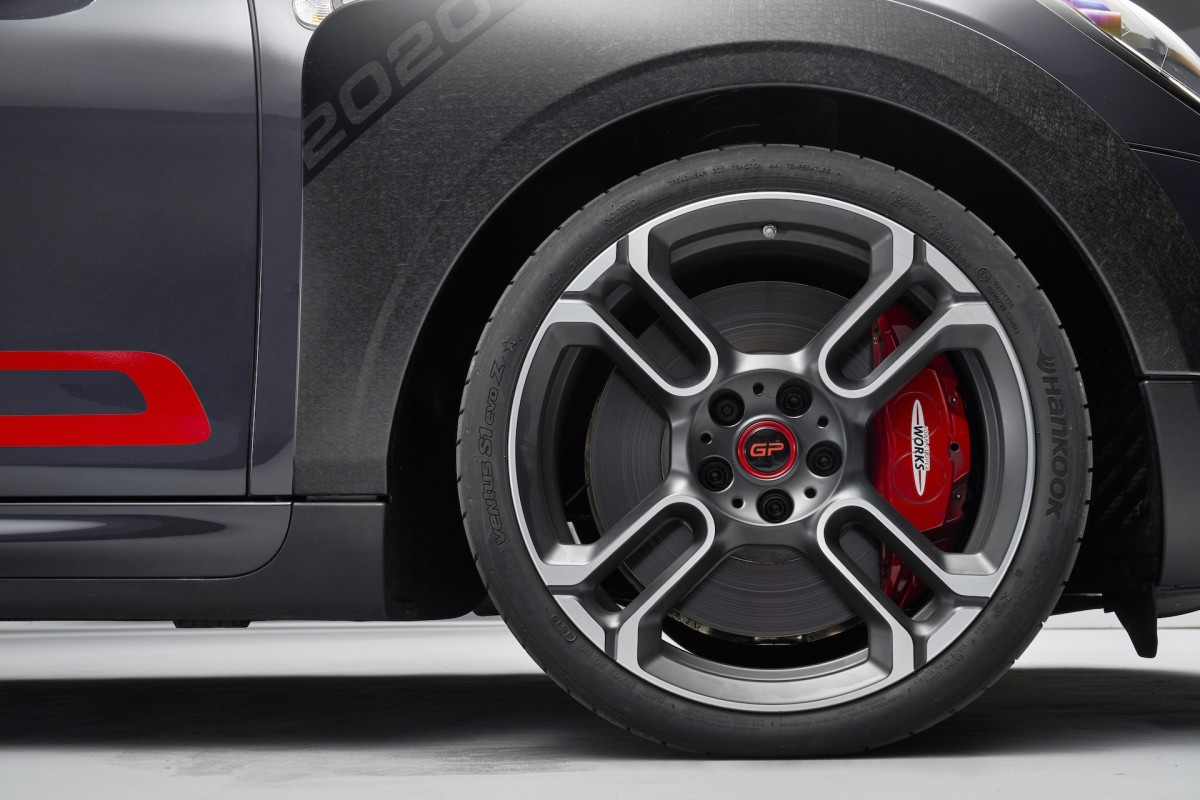
But none of these necessary measures can fully temper the aforementioned 331 lb-ft of torque, and while the suspension is decidedly super-glued to the ground, and the car sits .4 inches lower than the already squat John Cooper Works edition, it crabs and hops and claws for traction constantly whenever you’re deep in the throttle.
At Monticello, we were always deep in the throttle.
Arguably, the car would be better either with a legitimate manual gearbox (Mini/BMW don’t have one that could handle this output) or dual-clutch automatic, especially on the track, where quick-downshifts were too frequently vetoed by the eight-speed-autobox.
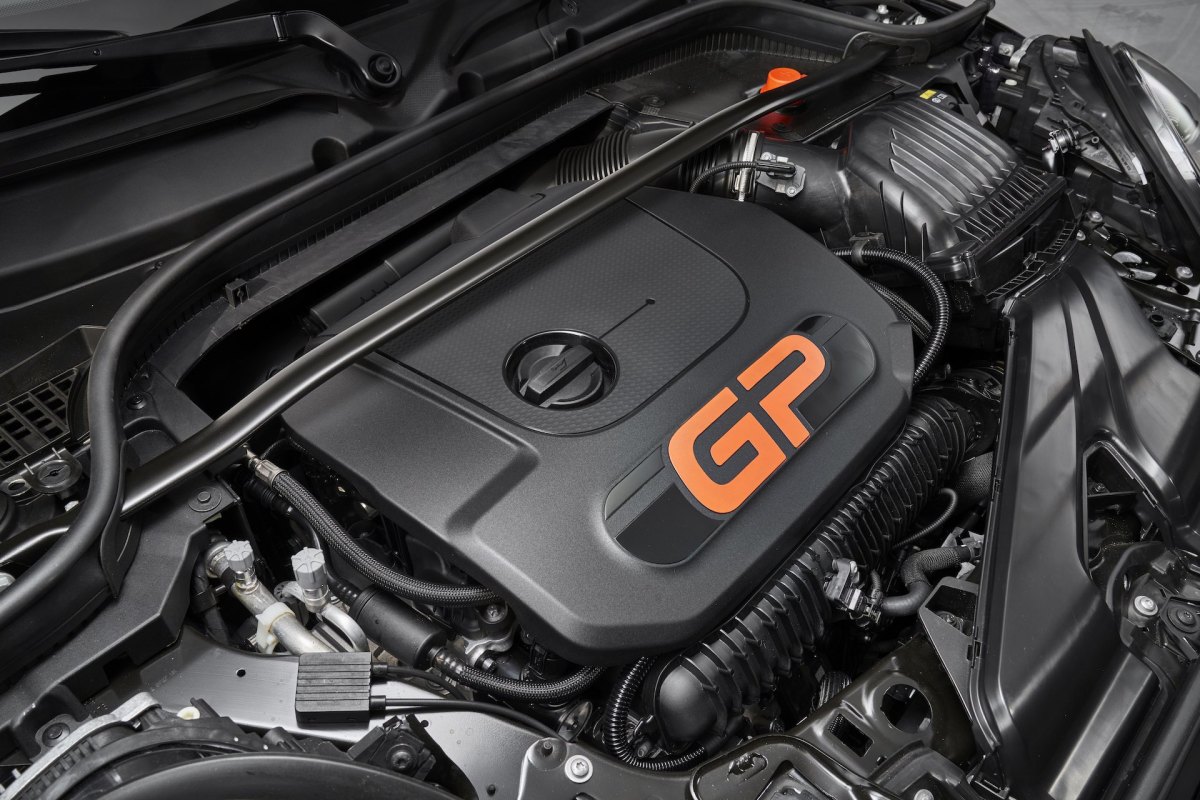
As for the suspension, it’s just sadistically stiff. Mini makes other cars for you, however, if that’s how you feel.
I’ll say that they could’ve done more work on downforce. This is a short car. It’s more than two feet shy of the length of the Honda Civic Type R, a hatch that Honda massaged extensively to be sure it would be safe at triple-digit speeds. Above 130 mph on the longest straight at Monticello, the Mini starts to hunt and drift and dance. It gets a little spooky. I didn’t rocket anywhere near its 165 mph top speed, and given how it felt nudging above 130 mph, I don’t want to.
Then again, this is a very light car, weighing just 2,860 pounds, versus 3,100 pounds for the Honda Civic Type R, and a full 500 pounds less than the Golf R. When you’re not sweating for apexes, the GP is positively, hysterically flickable. Lighter cars have that huge benefit and Mini’s taken that playfulness and pushed it to 11/10ths, just because.
The GP is doing the lampshade dance when all the other carmakers are tut-tutting. But who’s having more fun?
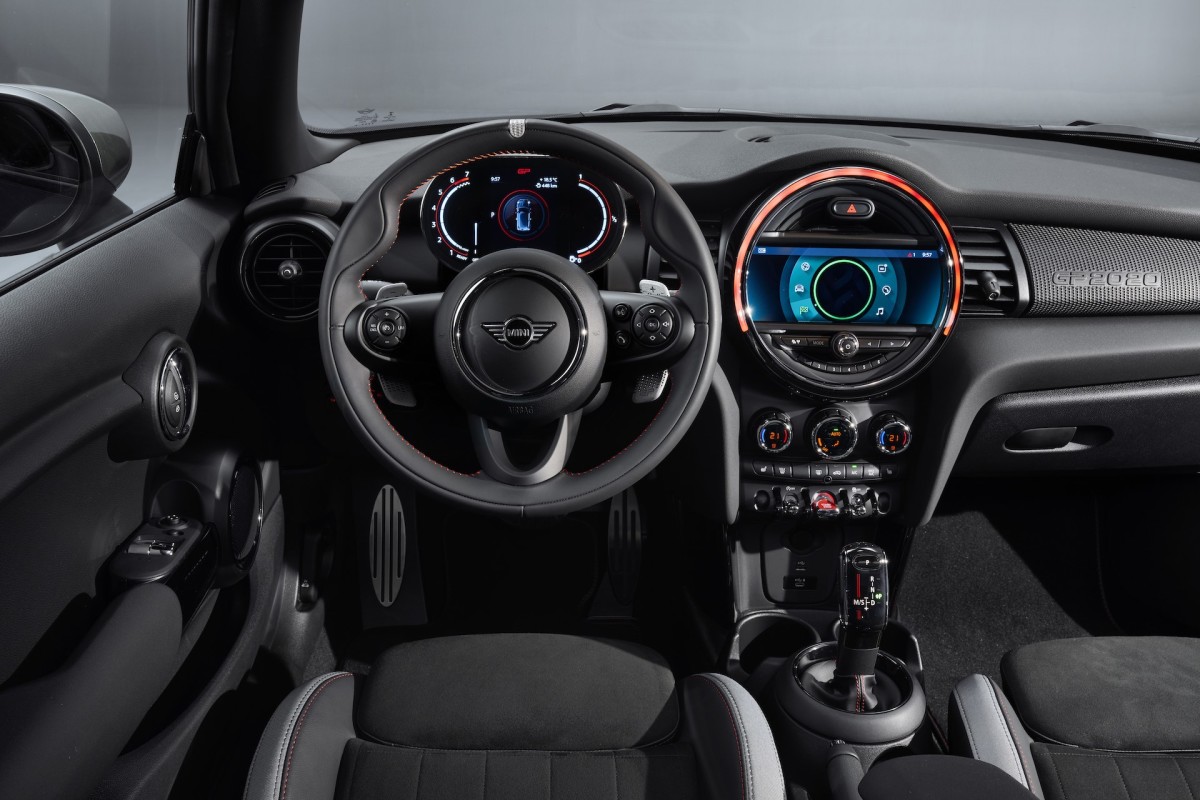
Argument No. 3: The Mini GP is Impractical
You sir, win the prize! This one is true. Both the Honda and the Golf R have legitimately useable backseats that flip forward and provide far more cargo capacity, not to mention, neither has a massive red cross-brace where a second row of seats belongs. Mini spokespersons showed us a slide that testified to why they don’t give a rat’s behind. The bulk of their buyers have at least two other cars and a very sizable chunk have three other cars. They have a BMW X5 because it’s practical. Maybe they have an even bigger one to tow their boat. If they’re buying the GP it’s because it’s NOT the same grocery getter everyone else has on their block.
Sure, other “hot hatches” are more pragmatic. But both the Golf R and the Honda Type R skew toward a much younger, much less wealthy demographic. Their hatches need to be practical because they drive their cars daily. The GP isn’t that at all. On purpose. Also, if I didn’t say this already, just about all of the GP’s are spoken for already. So the critics can be right all they want about how a car adds up on paper. Mini’s just going to keep throwing a too-loud, too-raucous party and see who comes. Gosh, I wish more carmakers would try that.
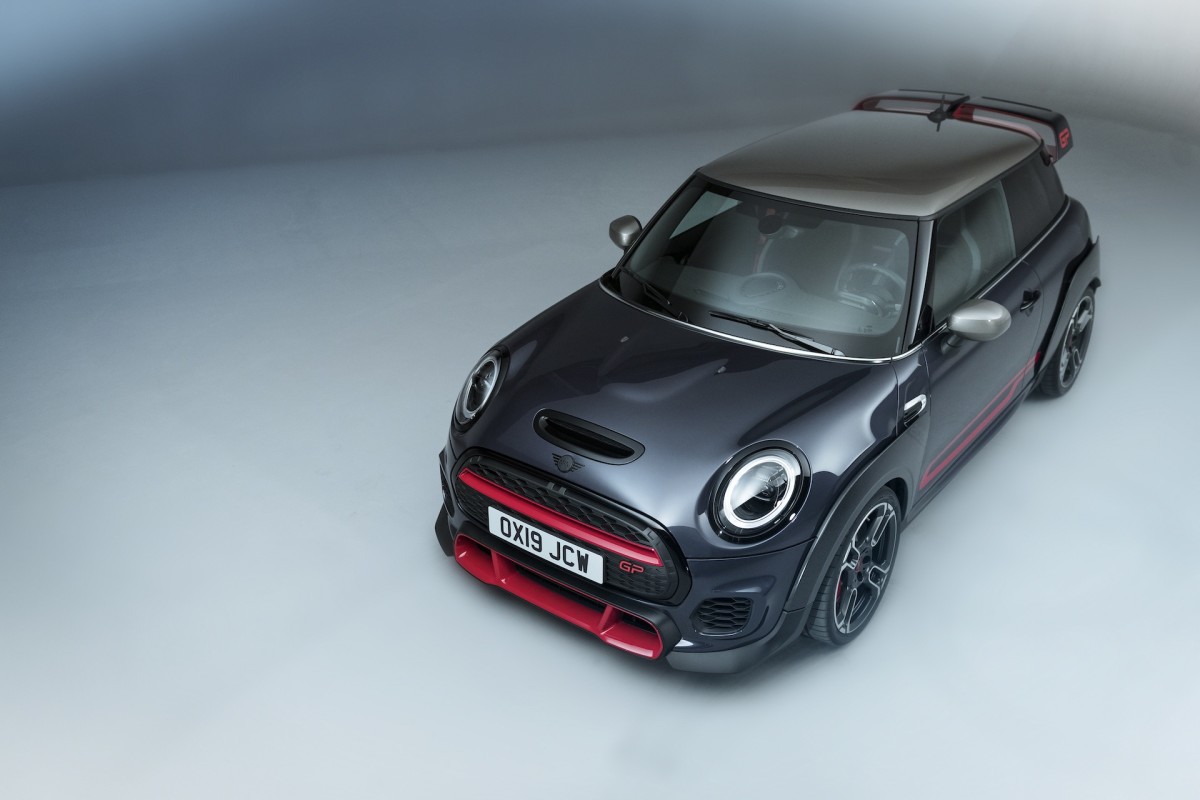
from Men's Journal https://ift.tt/37sdzme
via IFTTT











0 comments:
Post a Comment